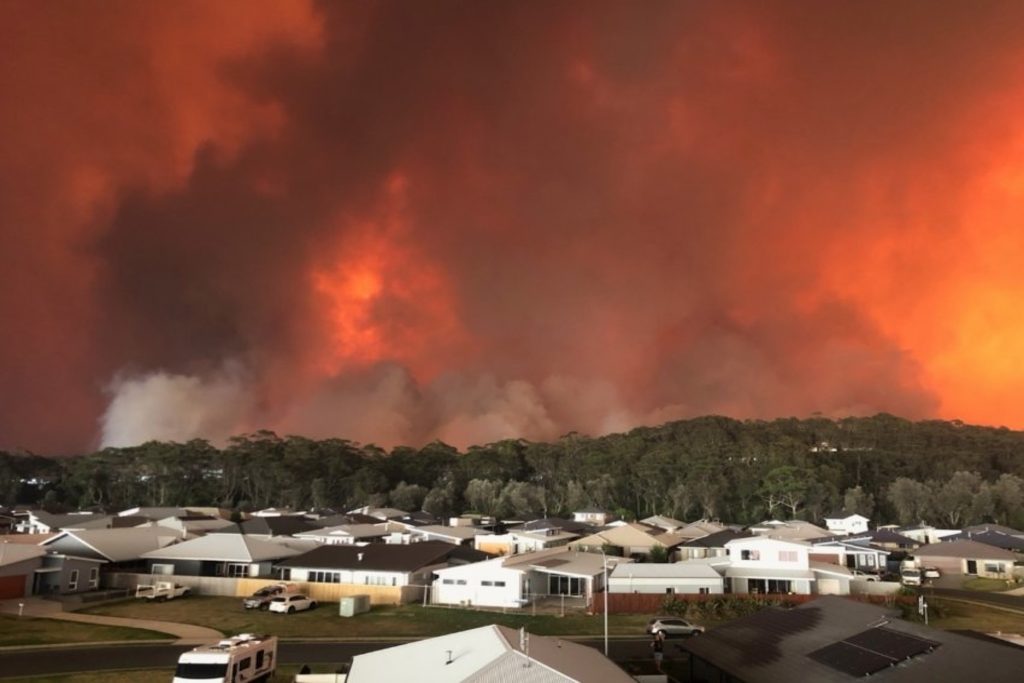Vital Tips for Bushfire Administration to Make Certain Fire Security

Understanding Bushfire Threat Degrees
Understanding the varying degrees of bushfire danger is vital for effective preparation and preparation in mitigating possible threats to lives and properties. Bushfire danger degrees are commonly classified based on elements such as climate problems, fuel availability, topography, and historic fire behavior. By understanding these danger individuals, degrees and communities can proactively apply techniques to reduce vulnerability and enhance strength in the face of possible bushfire events.
The first level of bushfire risk is reduced danger, where the probability of a bushfire taking place and triggering considerable harm is minimal. High-risk degrees indicate a significant danger, with problems favorable to rapid fire spread and extreme fire habits.
Comprehending these bushfire risk levels makes it possible for stakeholders to tailor their preparedness and response activities as necessary, ensuring a effective and proactive strategy to bushfire administration.
Establishing a Defensible Space
Efficient bushfire management starts with establishing a defensible space around buildings to boost protection versus possible fire dangers. A defensible space is a barrier zone that develops an obstacle in between a framework and the surrounding flammable plant life. This room works as an essential line of defense, offering firemans a secure location to operate and assisting to decrease the threat of a fire spreading to the residential property.
When creating a defensible area, it is vital to think about the format of the building and the bordering landscape. Clearing plant life, specifically very combustible plants, within a certain span of the home can assist avoid the quick spread of fires. Additionally, preserving a well-irrigated area around the building can even more improve its defensibility.
Regular maintenance of the defensible space is crucial to ensure its efficiency. This includes cutting overhanging branches, removing dead plant life, and keeping the area free of debris. By investing time and initiative right into creating and keeping a defensible room, property owners can dramatically boost their chances of safeguarding their homes and assets during a bushfire.
Carrying Out Fireproof Landscape Design
When developing landscapes to mitigate the danger of bushfires, integrating fire-resistant components is essential for improving home security and minimizing fire hazards. Select plants with high moisture web content, low oil web content, and very little dead vegetation to reduce the threat of fire spread.

Creating an Emergency Situation Emptying Strategy
Developing a thorough emergency evacuation strategy is critical for making sure the safety and security and wellness of individuals throughout possible bushfire events (Bushfire Management Plan). A reliable discharge plan ought to lay out clear treatments to follow in case of a bushfire danger, including designated discharge routes, assembly points, and communication procedures
To begin creating an emergency evacuation plan, it is crucial to assess the certain dangers and vulnerabilities of your area. Identify multiple discharge courses that lead to secure areas visit site away from the fire, thinking about variables such as terrain, road access, and possible risks. Establish interaction channels to alert homeowners of an approaching emptying, making use of methods such as alarms, text informs, or door-to-door alerts.
Routinely testimonial and exercise the emptying strategy with all homeowners or neighborhood participants to make certain everybody recognizes their duties and duties. Conduct drills to evaluate the performance of the plan and make any kind of needed changes. By having a well-prepared evacuation plan in area, you can improve the opportunities of a organized and secure emptying during a bushfire emergency.
Preserving Fire Safety Equipment
After establishing an extensive emergency situation evacuation plan for bushfire incidents, it is necessary to prioritize the normal maintenance of fire safety and security devices to guarantee optimum performance and readiness. Regular upkeep of fire security devices such as fire extinguishers, smoke detectors, smoke alarm, and automatic sprinkler is critical in protecting lives and building during a bushfire. Conducting routine evaluations, screening, and maintenance of these tools by certified specialists is vital to assure they are in functioning order when required.
Fire extinguishers ought to be examined consistently for stress levels, visible damages, and appropriate capability. By carefully preserving fire safety equipment, people can boost their preparedness and feedback capabilities in the event of a bushfire.
Final Thought
To conclude, effective bushfire monitoring entails understanding threat levels, creating defensible areas, carrying out fire-resistant landscape design, establishing evacuation strategies, and maintaining fire safety and security equipment. By following these important ideas, individuals can make sure far better fire protection and safety and security for their residential or commercial properties and areas. It is essential to focus on aggressive actions to mitigate the threats connected with bushfires and to be gotten ready for emergencies.
By understanding the nuances of bushfire risk address levels, developing defensible areas, carrying out fire-resistant landscape design, developing thorough evacuation strategies, and navigate to this site making sure the upkeep of fire safety tools, neighborhoods and individuals can considerably reinforce their resilience against the devastations of wildfires - BMP. These pointers are not only critical for safeguarding versus prompt fire hazards however additionally for promoting lasting fire protection strategies that can make a substantial distinction in the face of escalating bushfire hazards
Risky levels signify a significant hazard, with conditions favorable to fast fire spread and severe fire actions. Normal maintenance of fire safety and security equipment such as fire extinguishers, smoke detectors, fire alarms, and lawn sprinkler systems is essential in securing lives and home throughout a bushfire.In verdict, effective bushfire management includes recognizing danger levels, creating defensible spaces, implementing fireproof landscaping, developing emptying plans, and maintaining fire safety and security tools.